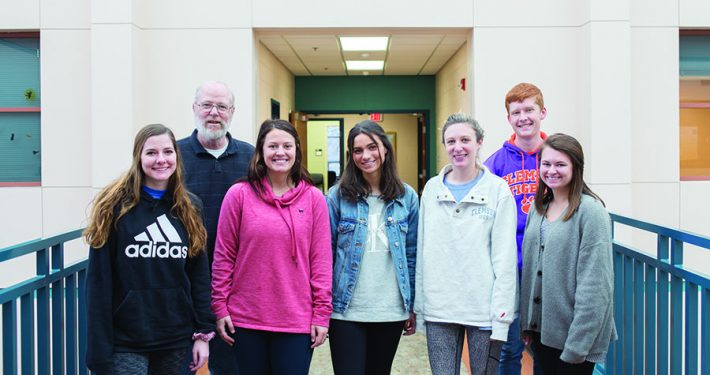Human Factors Forensics
by Stone Washington
Human factors is a term that defines the way in which humans interact with their environment. It encompasses a person’s perceptual, cognitive and physiological relationship to others and one’s own existence. It also comprises an important element of the legal arena, providing the basis for fault and accountability behind one’s decision-making. Dr. Benjamin Stephens in the Department of Psychology, mentors the Human Factors Forensics Creative Inquiry project which applies the scientific method to decipher how human decision-making factors into the law. Students examine the basic principles behind perception and cognition while applying these principles to certain incidents where individuals were hurt in order to better understand the scenarios and to help understand the causes of injuries.

the Human Factors Forensics team
The Creative Inquiry team uses case studies to reexamine previously documented cases to determine causality. “So, in order to help a jury understand the situation, sometimes a scientist needs to explain how we perceive the world, how we can think about what we’re doing and how that might have influence in a given incident in which someone was hurt,” Stephens says.
One case the team is investigating is a common accident at Clemson University—students tripping. To investigate, the team asks the person where they tripped and if they saw the trip hazard coming. The team then decides what type of measurements to take to assess whether the person was reasonably careful or distracted (e.g., looking at a cell phone).
Stephens sees the project as an invaluable experience for students—a combination of scientific experimentation and the application of human factors theory to real-world incidents. “There’s a nice synergy between doing experimental research in a laboratory and having a better understanding of why accidents happen and what can be done to make a situation safer,” Stephens says. The team’s next research study involves situations where people working on or around skylights have fallen through the skylight into the room below. Morgan Kilver, a senior psychology major, says they want to figure out if people do not see it. By applying a set of human factors, the team hopes to prevent similar accidents from occurring in the future.


